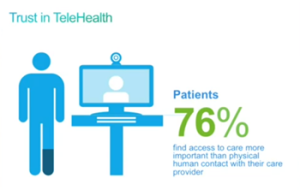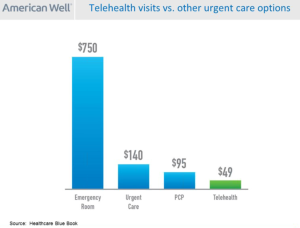 One in 2 hospitals currently use three or more connected health technologies, according to the 2016 HIMSS Connected Health Survey released today at the annual HIMSS conference.
One in 2 hospitals currently use three or more connected health technologies, according to the 2016 HIMSS Connected Health Survey released today at the annual HIMSS conference.
The most commonly used connected health applications cited were:
- Patient portals, among 58% of providers
- Apps for patient education and engagement 48%
- Remote health monitoring, 37%
- Telehealth via fee-for-service, 34%
- SMS texting, 33%
- Patient-generated data, 32%
- Telehealth via concierge, 26%.
47% of health care providers plan to expand use of connected health technologies, especially for telehealth via concierge, patient-generated data, and SMS texting.
HIMSS worked with the Personal Connected Health Alliance (PCHA) to analyze input from 227 health IT professionals in hospitals and health systems for this study.
 Health Populi’s Hot Points: Today, Jan Oldenburg and I will duet-on a panel covering telehealth in the expanding value-based world and how using connected health technologies can bolster the patient-doctor relationship. The HIMSS/PCHA survey results reinforce our message, that connected health technologies — broadly defined under the “telehealth” umbrella, as we see the concept — are a strategic resource for taking on financial risk and value-based care which drives toward the Triple Aim.
Health Populi’s Hot Points: Today, Jan Oldenburg and I will duet-on a panel covering telehealth in the expanding value-based world and how using connected health technologies can bolster the patient-doctor relationship. The HIMSS/PCHA survey results reinforce our message, that connected health technologies — broadly defined under the “telehealth” umbrella, as we see the concept — are a strategic resource for taking on financial risk and value-based care which drives toward the Triple Aim.
What doesn’t get enough attention, which I will cover in my portion of our dialogue, is the role of patient-as-payor in this value-based system — where value is in the eye of the patient. With US health citizens spending $1 in every $5 of household budgets on health care, the line item is now top-of-mind for people-as-patients. So a $49 telehealth visit, when one is meeting a deductible with “my money,” is an attractive prospect vis-a-via a $750 ER visit (see the second chart for the data).
That about one-half of health care providers said they’re going to expanding connected health tech’s with consumers in the coming year is good news for patients who are now playing the role of payor.





 Thank you FeedSpot for
Thank you FeedSpot for